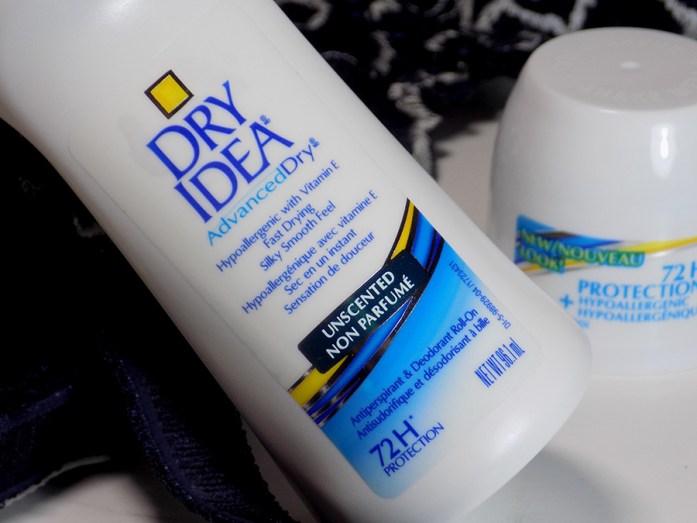If you’re someone who manages sensitive skin, allergies, or simply refuses to mess with overpowering scents, you probably know Dry Idea Unscented Gel Deodorant. Developed originally with hypoallergenic needs in mind, this deodorant carved out a loyal, even vocal, customer base over the years.
Now, Dry Idea Unscented Gel is officially discontinued. The sudden disappearance is leaving long-time users scrambling for solutions. You need clear answers, not marketing jargon. Let’s break down why this staple got the axe, what you can learn, and what next moves make sense for you or your business.
Consumer Reactions: Loyalty Collides with Disappointment
Start by listening to your most loyal customers. That’s what persists in business, and that’s the crowd Dry Idea served with Unscented Gel. Scroll through review sites or Dry Idea’s own feedback section. You’ll see a string of customers in disbelief, frustration, and grief.
They don’t just miss the product—they openly question why the brand would ditch something so unique. Many rely on this exact formula for health reasons. For people allergic to fragrance, or with skin prone to strong reactions, alternatives don’t cut it. They’re not being overdramatic—they just have a specific, real need.
Here’s your clue: focus on a specific customer and a real problem they’ll pay to solve. When that solution vanishes, backlash is predictable.
Status Confirmation: No Official Statement, Plenty of Clues
If you’re waiting for a press release or heartfelt blog post explaining the discontinuation, stop. Dry Idea has not released a detailed explanation. The brand’s website language and absence in store inventories confirm it: the Unscented Gel is finished, with no official successor.
Consumer comments keep piling up, asking for clarity that simply isn’t coming. This isn’t uncommon for older or niche items. When a product quietly disappears from both shelves and websites, and customers can’t find it at major retailers, you’re looking at a business decision, not a technical crisis.
The bottom line: if there’s consistent speculation and a company goes silent, it’s usually a calculated pivot, not negligence.
Possible Reasons Behind Discontinuation
You won’t always get a tidy corporate memo about discontinuations. Here’s how to read the tea leaves anyway:
1. Sales Figures Don’t Justify Production
Managing your finances and inventory for the long-term requires tough cuts. If only a small segment buys a product, economies of scale work against you. Low sales mean higher costs per unit, making your least popular SKUs the first to go when budgets tighten.
2. Niche Market Dynamics:
If your market segment is very small, even passionate fans may not influence the bottom line enough. Hypoallergenic and unscented products can be lifelines, but if they aren’t bought in bulk, corporate heads weigh “serve the few” against “reinvest in bestsellers.”
3. Ingredient or Regulatory Challenges
Personal care ingredients face frequent scrutiny. The cost or hassle of reformulating to meet changing ingredient standards can tip the scales. If your supply chain is specialized or an ingredient becomes restricted, a legacy product’s days are numbered.
4. Brand Repositioning or Marketing Strategy
Corporations often consolidate product lines for clarity or to introduce new sub-brands. If an item no longer fits a modern target market, it may disappear, even if it’s loved by a smaller following.
Here’s your strategy lesson: Periodically audit your own offerings. Cut underperformers early, and communicate directly why you’re focusing resources elsewhere. That honesty can build long-term trust—even in disappointment.
History of Product Changes: Rumors, Customer Experience, and Company Communication
Change sparks rumors. Over time, some customers claimed the Dry Idea formula shifted after the company rebranded. These reports include complaints about poor effectiveness or changed texture. Yet when pressed, the company insisted nothing essential changed in the original formula—silencing some worries, but never fully reassuring skeptics.
This story matters for your business blueprint. Continual, transparent messaging about product updates, especially on sensitive issues like efficacy or allergens, can make or break your brand credibility. When customers see an opaque response, suspicion grows.
If you switch up a formula or discontinue something, do the hard thing—explain your reasoning, even if it’s uncomfortable. That moves you from excuse-maker to reliable partner in your customer’s life.
Current Product Availability: What’s Left for Dry Idea Fans?
Strategic product line management means you might keep certain core variants while axing others. That’s exactly what Dry Idea has done. You can still buy their roll-ons and solid stick formulas. These products still carry the core Dry Idea brand promise. But here’s the kicker: the Unscented Gel, the very product beloved for its uniqueness, is officially discontinued.
If you’re an entrepreneur, pay attention—sometimes, your winner is not your best-seller, but your most differentiated offer. When you lose that, your diehards will feel it.
For customers seeking a direct replacement, current alternatives don’t really compare. Many reviews mention trying other “unscented” or “hypoallergenic” items, only to face breakouts or find hidden fragrances. When a niche fills a true gap, you can’t just swap it out and expect zero pushback.
Common Discontinuation Trends in Personal Care Products
Why do personal care products, especially hypoallergenic and unscented ones, vanish from shelves so often? Here’s what’s predictable:
1. Line Consolidation
Manufacturers want streamlined cost structures. Fewer SKUs mean easier forecasting, production, and marketing. If a product cannibalizes sales from another, or just isn’t moving, it gets retired. This is especially common in personal care and hygiene, where every color, scent, or format adds complexity.
2. Niche Market Fatigue:
Specialized products serve small but devoted audiences. If regulations change or production costs rise, these items are often first on the chopping block. Unless the customer base grows fast enough, keeping niche lines alive isn’t always profitable.
3. Supply Chain or Ingredient Shifts
Discontinued raw ingredients, stricter regulations, or new manufacturing priorities knock out low-volume lines. Unlike a trendy new release, a legacy product missing a key component rarely justifies a high-cost reformulation.
4. Changing Customer Trends
If customer behavior shifts toward newer features, brands often sacrifice older lines to make space. Scented products, added wellness claims, or streamlined packaging can all edge out old standbys, even if some customers are left behind.
For your business, this is a classic case—focus relentlessly on current customer needs and be ready to reallocate resources if the math shifts. The lesson: review your catalog for profitable offers and watch how changes in market demand or regulation can signal a coming pivot.
Conclusion: Strategy Lessons from Dry Idea Unscented Gel’s Disappearance
Set yourself up for success by watching how established brands act in the face of niche customer demand. Businesses discontinue products all the time, but when they eliminate a life-changing solution for a small but vocal segment, it draws clear lines around long-term strategy versus “everyone happy, all the time” thinking.
If you’re a customer, don’t wait around for a perfect replacement — try new options, but read labels with care and join communities that share reviews about sensitive-skin-safe products. Track ingredient lists, and consider reaching out directly to brands to request specific formulations.
For business owners and aspiring founders, Dry Idea’s move is a reminder: manage your finances, weigh profitability, and communicate every tough call. Transparent customer engagement matters. If you handle discontinuations openly and give customers reasons to stick with your brand, you can survive a product purge — even one with short-term backlash.
Focus on your specific audience and a real problem they’ll pay to solve. If regulations, trends, or costs shift, be decisive. Use routine product reviews to cut what isn’t moving and double down on profitable, high-impact offers. Keep your own roadmap lean, customer-driven, and ready to adapt.
Set regular time to examine your lineup, scrutinize costs, and invite feedback. Pair data with your gut, and don’t be afraid to sunset legacy products that no longer serve your main goal. If you’re looking for more business strategies to build a strong foundation, you might find the advice on novabusinesstips.com effective for charting your own predictable growth path.
Bottom line: Dry Idea Unscented Gel’s exit is disappointing for those who depended on it, but it’s also a real-world lesson in product lifecycle management. Your job—whether you’re swapping deodorants or running a startup—is to adapt, communicate, and keep focusing on viable, profitable solutions.
That’s how you build resilience, long-term trust, and a business that thrives even in changing markets.


